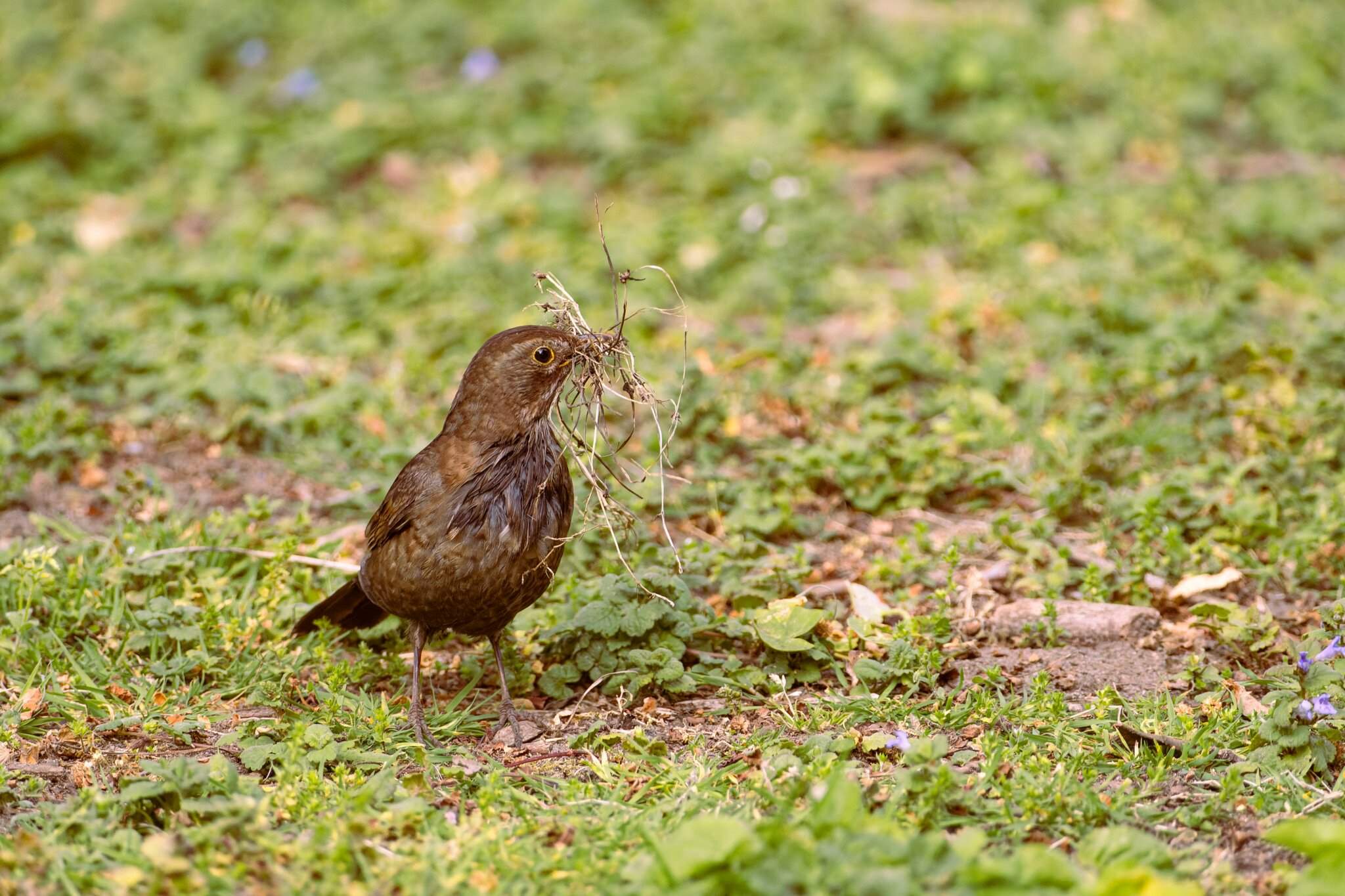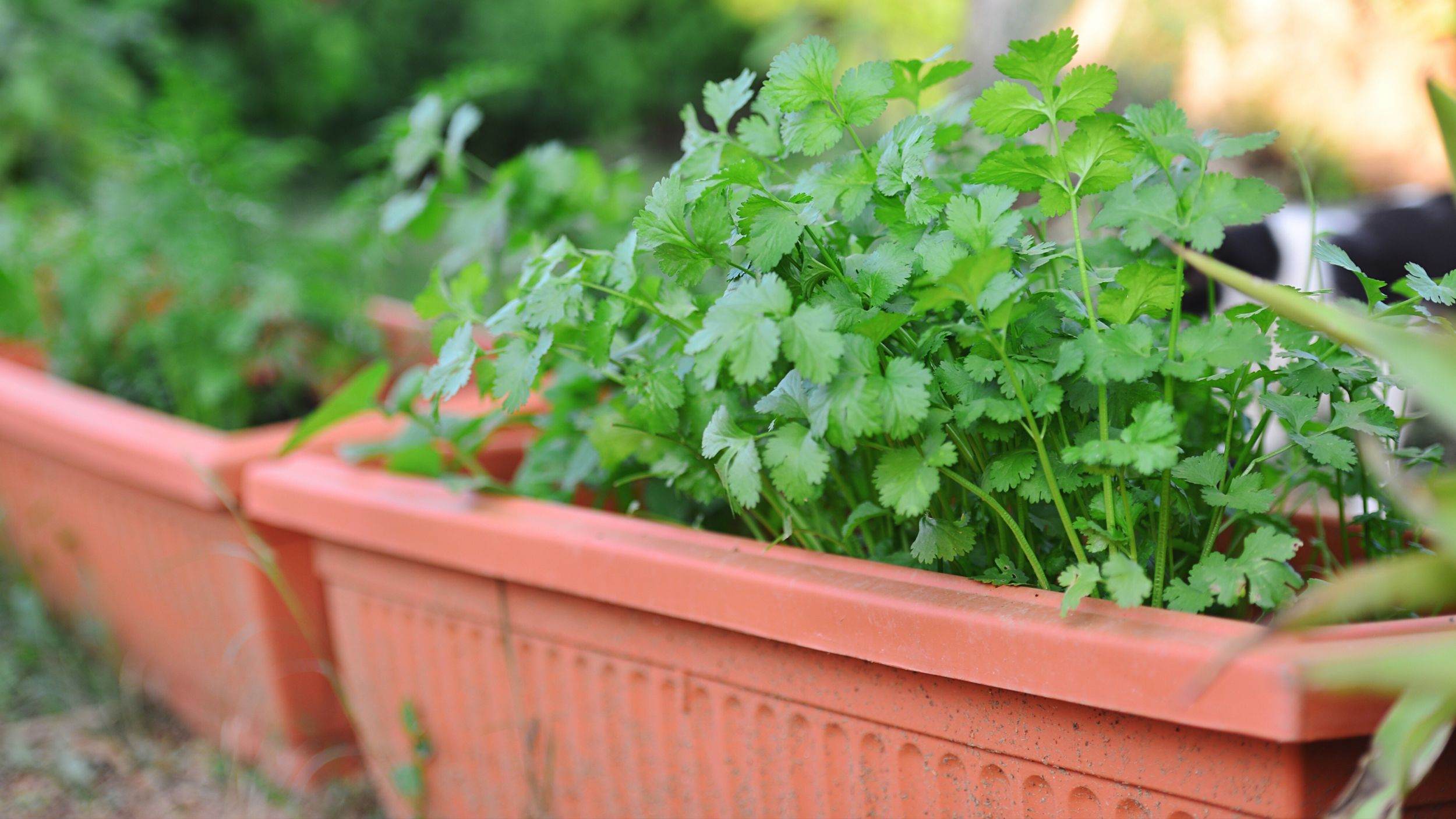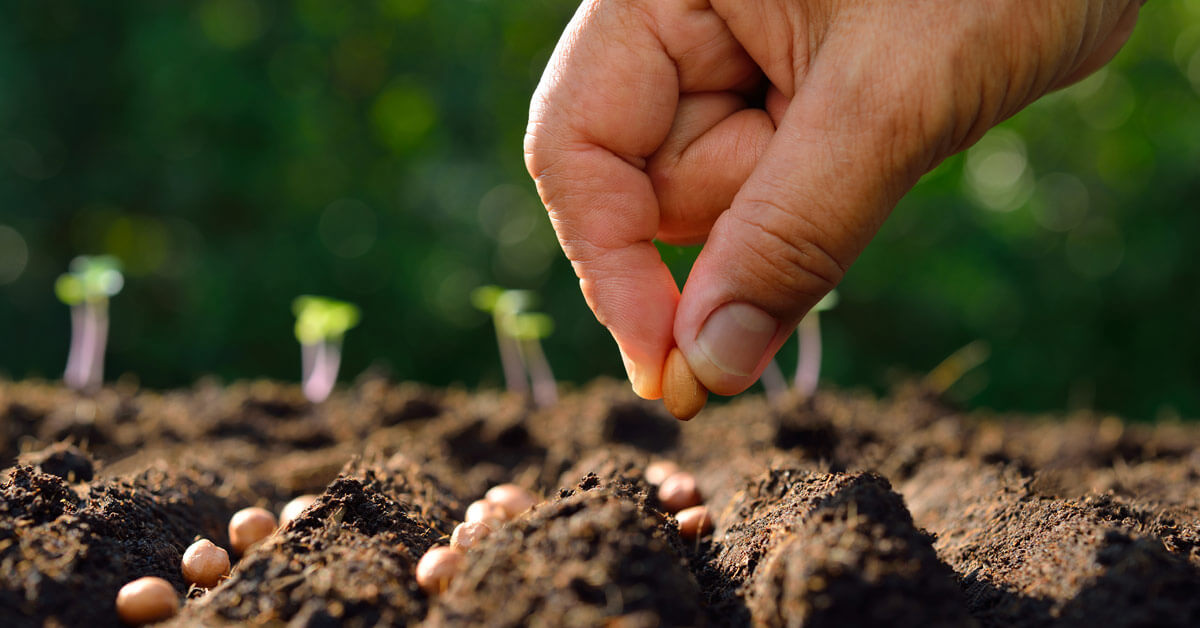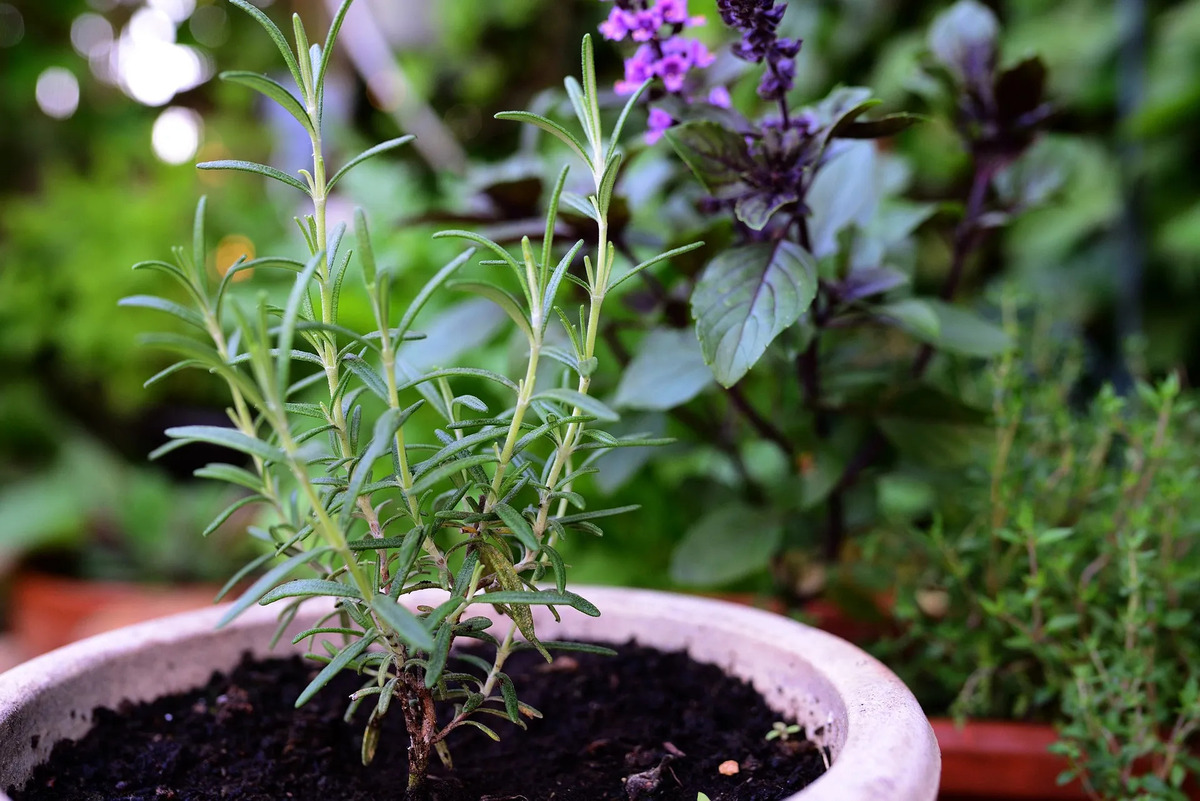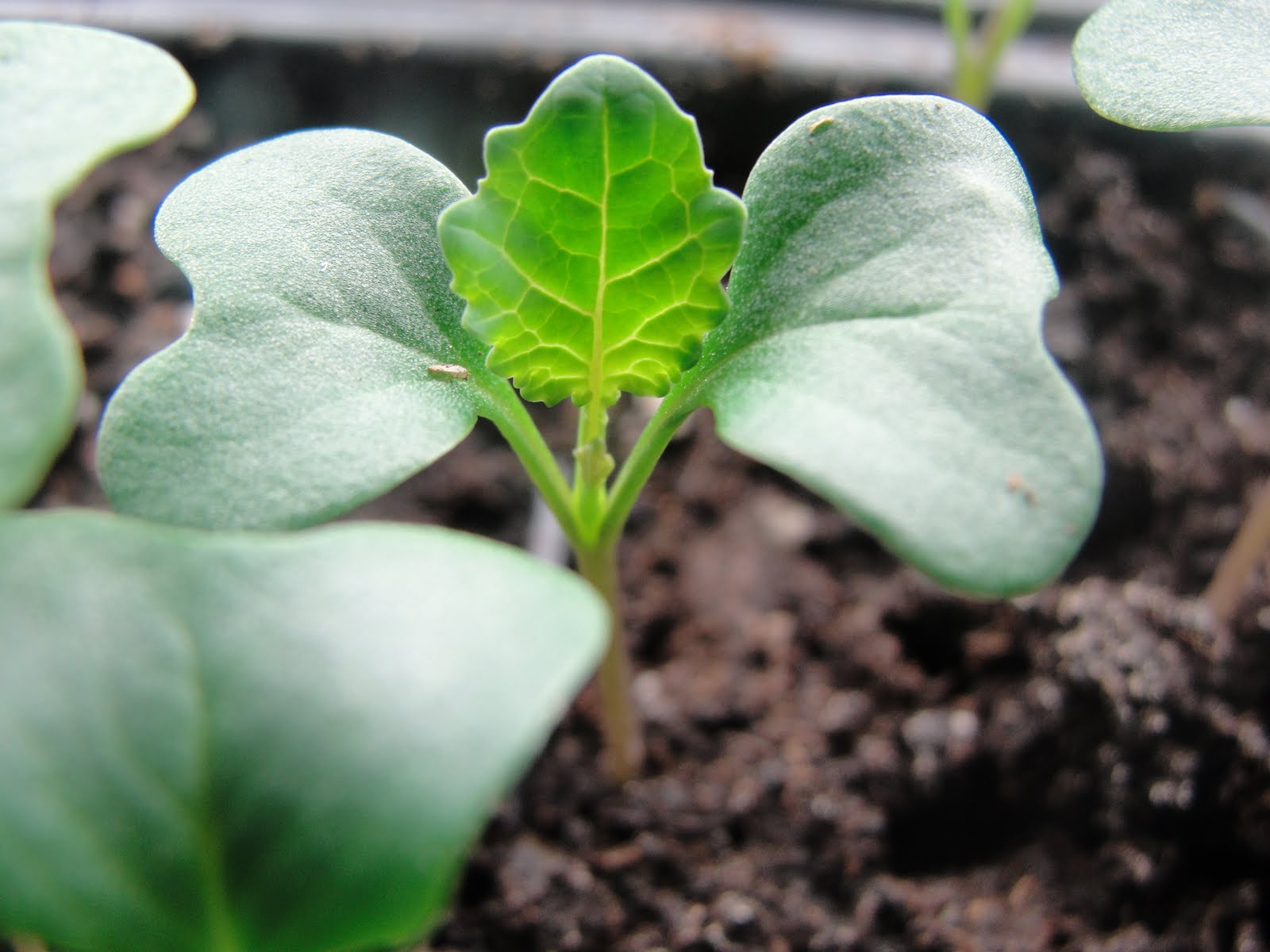Home>Gardening Tips and Tricks>Problem Solving>How To Stop Trees From Growing


Problem Solving
How To Stop Trees From Growing
Modified: January 22, 2024
Learn effective problem solving techniques to stop trees from growing in your space. Follow our expert tips and prevent any future tree-related issues.
(Many of the links in this article redirect to a specific reviewed product. Your purchase of these products through affiliate links helps to generate commission for Chicagolandgardening.com, at no extra cost. Learn more)
Table of Contents
Introduction
Trees are a beautiful and essential part of our natural surroundings. With their majestic presence and environmental benefits, they bring life and tranquility to our landscapes. However, there are instances when trees can become a problem. Whether it’s a tree that is growing too close to a power line, interfering with the foundation of a building, or simply crowding out other plants and obstructing sunlight, controlling tree growth becomes necessary.
In this article, we will explore the various problems associated with tree growth and discuss effective methods to control it. Understanding the factors that contribute to tree growth and the techniques to mitigate it will empower you to take the necessary steps in managing tree growth in your surroundings.
It’s important to note that while controlling tree growth is essential, it should always be done in a responsible and eco-friendly manner. Trees provide numerous benefits, including oxygen production, air purification, and habitat for wildlife. Therefore, the aim should be to mitigate tree growth issues while preserving the overall health and value of the tree.
Whether you’re a homeowner, landscaper, or property manager, this article will provide you with valuable insights into tree growth problems and effective solutions. So, let’s delve into the intricacies of tree growth management and discover ways to keep our surroundings balanced and harmonious.
Understanding Tree Growth
Before we dive into the techniques for controlling tree growth, it’s important to understand how trees grow and what factors contribute to their growth. Trees have a remarkable ability to expand and reach great heights, thanks to a process called cell division.
At the core of a tree’s growth lies the meristem, a specialized tissue found at the tips of branches and roots. The meristem contains undifferentiated cells that actively divide, leading to both vertical and lateral growth. Vertical growth occurs through cell division at the tree’s apex, resulting in the elongation of the trunk and branches. Lateral growth happens through the production of new cells in the cambium layer, located just beneath the bark, which leads to the tree’s girth expansion.
Tree growth is influenced by various internal and external factors. Internally, genetic factors play a significant role in determining a tree’s growth rate, size, and shape. Additionally, factors such as nutrient availability, water supply, and hormonal balance within the tree can impact its growth.
Externally, environmental conditions such as sunlight, temperature, and soil fertility also affect tree growth. Trees require an adequate amount of sunlight to carry out photosynthesis, which is essential for their energy and growth. Temperature influences the tree’s metabolic rate and growth rate, while soil fertility provides the necessary nutrients for healthy growth.
Understanding these factors is crucial as it can help us identify the potential problems associated with tree growth. By considering the genetic traits, environmental conditions, and growth patterns of specific tree species, we can anticipate growth-related issues and implement appropriate management techniques.
In the next sections, we will explore common tree growth problems and discuss effective methods to control and manage them. Having a solid understanding of how trees grow will enable us to take proactive measures in maintaining a well-balanced and sustainable environment.
Common Tree Growth Problems
While trees are a valuable asset, they can sometimes present challenges when it comes to uncontrolled growth. Let’s explore some common tree growth problems that property owners and landscape managers often encounter:
- Overcrowding: Trees that are planted too closely together can impede each other’s growth. The dense canopy can prevent sunlight from reaching the lower branches and the soil beneath, affecting the growth of other plants and causing competition for resources.
- Interference with Structures: Trees growing too close to buildings, power lines, or underground infrastructure can pose a risk. The root system can damage foundations, while branches can interfere with power lines, causing safety hazards. In such cases, managing tree growth becomes essential to protect both the tree and nearby structures.
- Obstruction of Views: Tall trees that obstruct scenic views or block sunlight from entering windows can be a source of frustration. In residential areas or commercial properties, these trees often need to be managed to maintain the aesthetic appeal and functionality of the site.
- Weak or Hazardous Branches: Uncontrolled tree growth can lead to the development of weak or hazardous branches. These branches pose a significant safety risk, especially in areas prone to strong winds or storms. Proper pruning and maintenance are necessary to prevent accidents and ensure the tree’s overall health and stability.
- Invasive Roots: Some tree species have aggressive root systems that can invade plumbing pipes, damage sidewalks, or disrupt underground infrastructure. Addressing these growth issues is crucial to prevent costly repairs and maintain the integrity of the surrounding landscape.
Recognizing these common tree growth problems is the first step in effectively managing them. By understanding the specific issues associated with tree growth, appropriate measures can be taken to control and mitigate their impact.
In the following sections, we will explore different techniques and methods for controlling tree growth, allowing for a well-maintained and harmonious environment.
Controlling Tree Growth
When it comes to managing tree growth, there are several effective techniques that can be employed. The choice of method depends on the specific tree growth problem and the desired outcome. Let’s explore some common strategies for controlling tree growth:
- Pruning Techniques: Pruning is a widely used method to direct and control tree growth. By selectively removing branches and foliage, pruning can help shape the tree, control its size, and improve its overall structure. Crown thinning, crown reduction, and crown raising are pruning techniques commonly used to manage tree growth. It’s crucial to follow proper pruning guidelines and consult with a certified arborist to ensure proper technique and minimize the risk of damage.
- Using Growth Inhibitors: Growth inhibitors, such as plant hormones or chemical treatments, can be utilized to slow down or suppress tree growth. These inhibitors work by interfering with the tree’s natural growth hormones, thus reducing its growth rate. It’s important to consult with a professional to determine the appropriate usage and potential environmental impacts.
- Tree Removal Methods: In some cases, when tree growth poses significant risks or cannot be effectively managed, tree removal may be necessary. This should be considered as a last resort and should be carried out by certified professionals to ensure safety and minimize damage to the surrounding environment. It’s important to follow local regulations and obtain the necessary permits before conducting any tree removal.
- Root Pruning: For trees with invasive root systems, root pruning can be an effective method of controlling growth and preventing damage to underground infrastructure. Cutting or pruning certain roots can redirect the tree’s growth, preventing it from causing further issues.
- Proper Tree Selection and Placement: One of the most effective ways to control tree growth is through proper tree selection and placement. By choosing tree species that are better suited for the desired location, such as slow-growing or smaller varieties, potential growth problems can be minimized. Additionally, planting trees at an appropriate distance from structures and other plantings can help prevent future growth-related issues.
It’s important to note that controlling tree growth should be done with care and consideration for the tree’s overall health and the surrounding ecosystem. Consulting with a certified arborist or tree care professional is recommended to ensure the most appropriate and sustainable approach is taken.
By employing these various techniques, property owners and landscape managers can effectively manage and control tree growth, ensuring a well-maintained and balanced environment.
Pruning Techniques
Pruning is a fundamental technique used for controlling tree growth and maintaining the health and aesthetics of trees. It involves the selective removal of branches and foliage, allowing property owners to shape and direct the growth of trees. Proper pruning techniques are essential to achieve desired results while minimizing the risk of damage to the tree. Let’s explore some commonly used pruning techniques:
- Crown Thinning: Crown thinning involves the selective removal of inner branches and foliage, typically targeting smaller, weaker, or crossing branches. This technique aims to increase light penetration and improve air circulation within the canopy. Crown thinning helps reduce the overall density of the tree’s foliage, control growth, and minimize the risk of branches breaking under heavy winds or snow loads.
- Crown Reduction: Crown reduction is used when a tree has grown too large for its allotted space or is encroaching on structures. It involves selectively removing specific branches to reduce the crown’s size while maintaining the overall shape and integrity of the tree. This technique is commonly applied to trees in urban areas to prevent interference with power lines or buildings. Proper execution is crucial to avoid excessive stress on the tree and ensure adequate healing of pruning wounds.
- Crown Raising: Crown raising is the process of removing lower branches to provide clearance under the tree’s canopy. This technique is often employed to allow for unobstructed views, ensure pedestrian and vehicle access, or prevent interference with structures. It requires careful consideration of the tree’s growth habit and removal of branches without compromising the tree’s overall health and stability.
- Formative Pruning: Formative pruning is important during the early stages of a tree’s life to shape its growth and establish a strong structure. This technique involves the selective removal of competing or poorly positioned branches to encourage a central leader and develop a well-balanced canopy. Proper formative pruning ensures that the tree develops a strong and healthy framework, reducing the risk of structural issues in the future.
- Deadwood Pruning: Deadwood pruning involves the removal of dead, diseased, or damaged branches. Deadwood not only poses a safety hazard but also provides a breeding ground for pests and diseases. Removing deadwood helps in maintaining the tree’s overall health and vitality. It’s important to prune deadwood carefully to prevent unnecessary damage to live branches and bark.
It’s crucial to follow proper pruning practices when implementing these techniques. Understanding the biology and growth patterns of different tree species is essential to ensure the best outcomes. Engaging a certified arborist or tree care professional can provide expert advice and ensure the proper execution of pruning techniques.
Remember, pruning should be done during the dormant season to minimize stress on the tree and allow for optimal healing. By employing the appropriate pruning techniques, property owners can control tree growth, enhance tree health, and maintain the desired aesthetic appeal of their landscape.
Using Growth Inhibitors
Growth inhibitors are effective tools for controlling tree growth and slowing down the rate of expansion. These inhibitors work by interrupting the tree’s natural growth hormones, thereby reducing its overall growth rate. While growth inhibitors can be a valuable solution in certain situations, their usage should be carefully considered and implemented. Let’s explore the concept of using growth inhibitors to manage tree growth:
Plant Hormones: Plant hormones play a crucial role in regulating plant growth and development. Growth inhibitors, or plant growth regulators (PGRs), are synthetic compounds that mimic or interfere with these natural hormones. By selectively targeting specific processes, growth inhibitors can slow down cell division, elongation, or branching, resulting in reduced tree growth.
Chemical Treatments: Chemical treatments, such as spray-on applications, are commonly used to deliver growth inhibitors to the tree’s foliage or directly to the trunk in some cases. These treatments are designed to be absorbed into the tree’s vascular system and distributed throughout the plant. The growth inhibitors then interfere with the hormone pathways, effectively reducing the tree’s growth rate.
Advantages: The use of growth inhibitors offers several advantages. They provide a non-invasive and cost-effective method for controlling tree growth without physically altering the tree’s structure. Growth inhibitors can be particularly useful when pruning alone is insufficient or when tree removal is undesirable. They offer a targeted approach, allowing property owners to manage growth selectively without negatively impacting the surrounding landscape.
Considerations: While growth inhibitors can be effective, there are a few considerations to keep in mind. First, the usage of growth inhibitors should be done by professionals experienced in their application. Improper usage may lead to ineffective results or adverse effects on tree health. Additionally, growth inhibitors may require multiple applications over several years to achieve the desired growth reduction. Patience and proper monitoring are essential to ensure long-term success.
Environmental Impact: It’s critical to consider the potential environmental impact of growth inhibitors. While they provide a targeted approach, there is still the risk of unintended effects on non-target species. It’s essential to follow label instructions, dosage rates, and application timings to minimize any negative effects on the environment.
Consultation: Before implementing growth inhibitors, consulting with a certified arborist or tree care professional is highly recommended. They can assess the specific tree growth issue, determine the suitability of using growth inhibitors, and provide guidance on appropriate application techniques.
Using growth inhibitors can be an effective method in managing tree growth, providing an alternative to physical methods such as pruning or removal. When used appropriately and in conjunction with other tree management practices, growth inhibitors can help create a well-balanced and controlled landscape environment.
Tree Removal Methods
While trees are a valuable part of our environment, there may be situations where tree removal becomes necessary. Uncontrolled tree growth, safety concerns, or the need for space can be factors that lead to the decision to remove a tree. Tree removal is a complex task that requires careful planning and execution to ensure safety and minimize damage. Let’s explore some common tree removal methods:
Felling: Felling is the most traditional method of tree removal. It involves cutting the tree at the base and allowing it to fall in a controlled manner. Felling requires skilled professionals who can accurately evaluate the tree’s lean, assess the surrounding environment, and identify any potential obstacles. Specialized equipment, such as chainsaws and ropes, are used to safely guide the direction of the tree’s fall.
Sectional Tree Removal: In situations where space is limited or structures are present near the tree, sectional tree removal is often employed. This method involves carefully dismantling the tree section by section, starting from the top. It requires the use of ropes, pulleys, and rigging techniques to lower branches and sections of the trunk to the ground safely. Sectional tree removal allows for precise control and minimizes the risk of damage to surrounding structures.
Crane-Assisted Removal: In cases where trees are located in hard-to-reach areas or have extensive branches that pose a risk during removal, a crane may be used. Crane-assisted removal involves using a crane with a lifting mechanism to lift and lower tree sections safely. This method allows for the removal of large trees with minimal impact on the surrounding environment.
Stump Removal: After a tree is removed, the remaining stump may need to be addressed. Stump removal can be done through various methods such as grinding or excavation. Stump grinding involves using a specialized machine to break down the stump into small wood chips, allowing for easy removal or decomposition. Excavation, on the other hand, involves digging out the entire stump and its root system. The preferred method depends on factors such as the size of the stump and the intended use of the area after removal.
Professional Expertise: Tree removal is a hazardous task and should always be carried out by trained professionals. Certified arborists or tree care professionals have the knowledge, experience, and specialized equipment required for safe and efficient tree removal. They can assess the situation, determine the appropriate method, and take all necessary precautions to ensure the task is completed without any harm or damage.
Environmental Considerations: Tree removal should always be approached with consideration for the environment. Before removing a tree, it’s important to check local regulations and obtain any necessary permits. Additionally, the wood from the removed tree can be repurposed or recycled, minimizing waste and maximizing its use.
In situations where tree removal is necessary, relying on professional expertise is essential. Proper planning and execution of tree removal methods ensure safety, minimal disruption to the surrounding environment, and the opportunity for new growth and landscaping possibilities.
Conclusion
Controlling tree growth is a crucial aspect of maintaining a well-balanced and harmonious environment. Whether it’s managing overcrowding, preventing interference with structures, or addressing invasive roots, understanding the various problems associated with tree growth is essential. By recognizing these issues, property owners and landscape managers can take proactive measures to effectively control tree growth.
Pruning techniques, such as crown thinning, crown reduction, and crown raising, offer ways to shape and direct tree growth while maintaining their health and structure. Using growth inhibitors can be a valuable tool in slowing down tree growth, but their usage should be carefully considered and executed under professional guidance.
In cases when tree growth cannot be managed effectively or pose safety risks, tree removal becomes necessary. Whether through felling, sectional removal, or crane-assisted removal, it’s crucial to rely on trained professionals for safe and efficient execution.
Throughout all of these methods, it’s important to consider the environmental impact of tree growth management. Preserving the overall health and value of trees, as well as minimizing waste and promoting sustainability, should always be at the forefront of any tree management practices.
By understanding the various techniques and methods available for controlling tree growth, property owners, landscapers, and property managers can create and maintain a well-maintained and balanced landscape. Consulting with certified arborists or tree care professionals is always recommended for expert advice and proper execution of tree growth management techniques.
Remember, trees are precious assets that provide numerous benefits to our environment. While controlling tree growth is necessary at times, it should always be done responsibly and with a long-term perspective, ensuring the preservation of our natural surroundings for generations to come.
